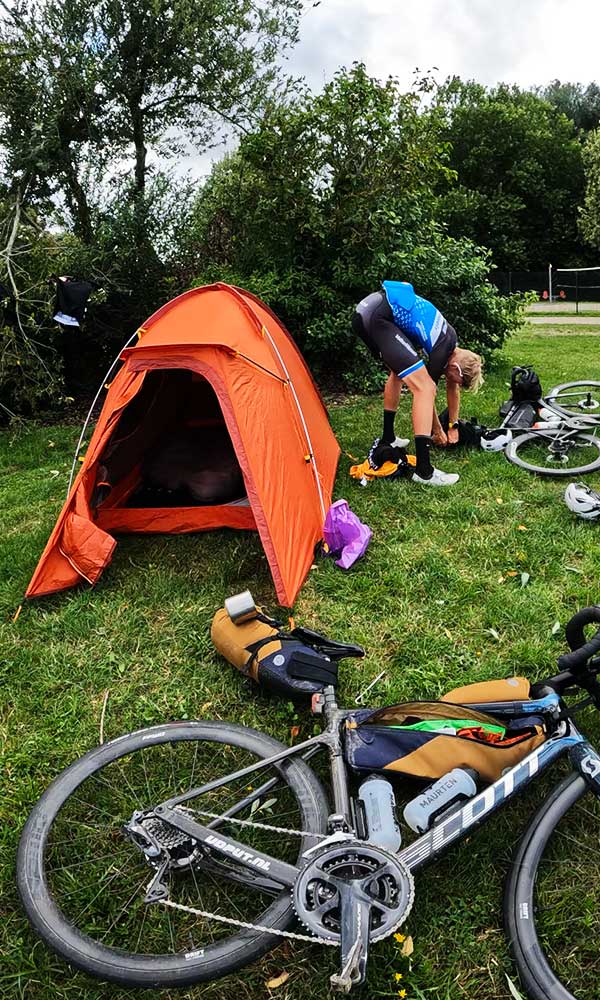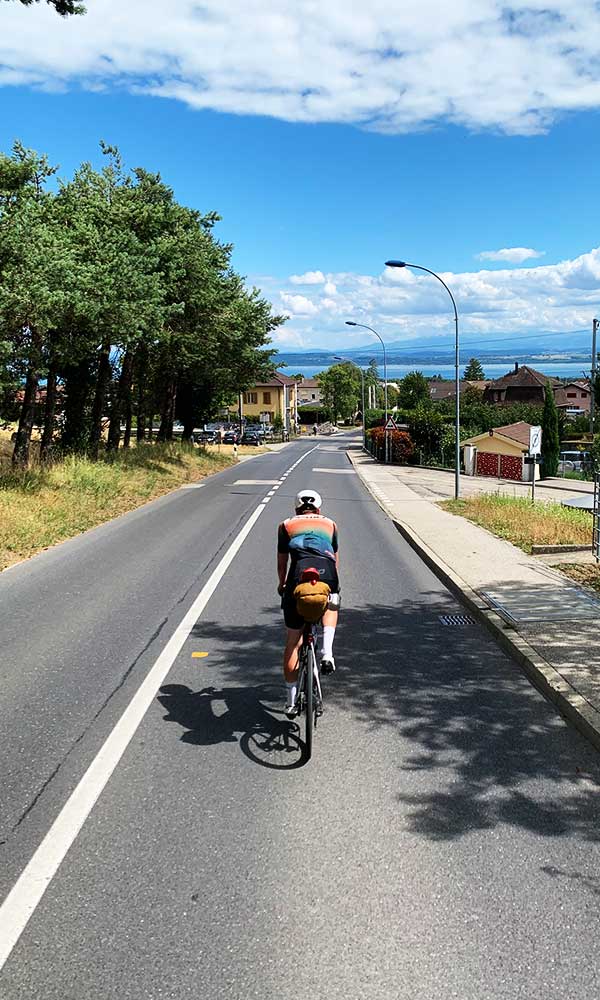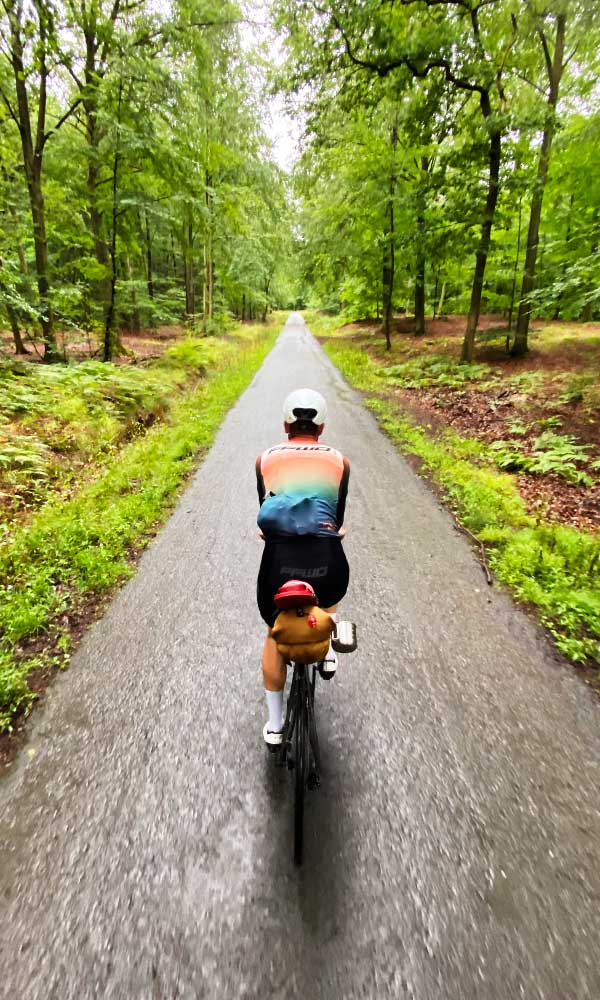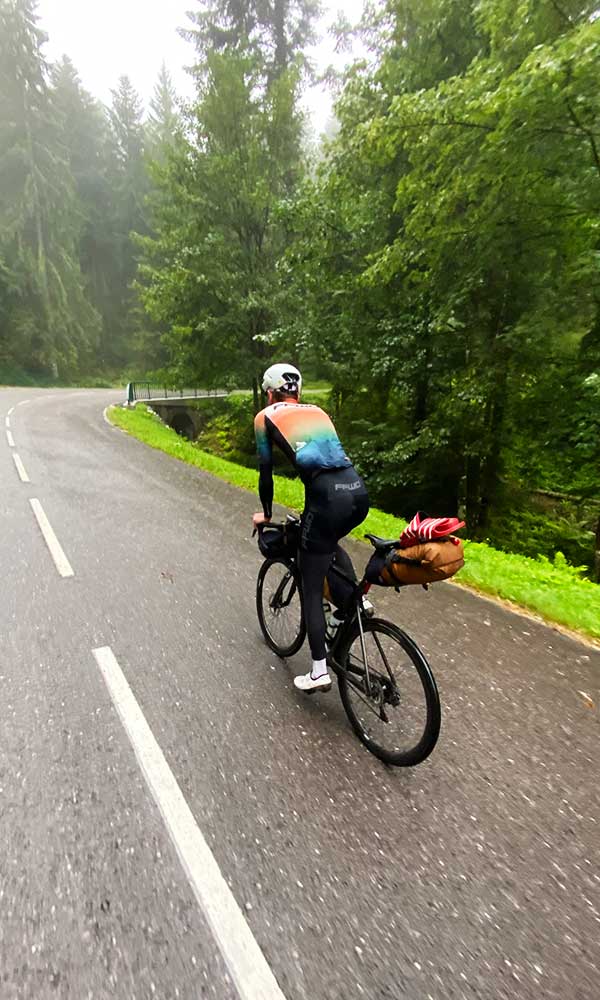Intro
When you have a plan to start a bikepacking adventure, everyone would asks themselves: “How do I start?” I also asked myself this question when the I first got this idea. In this blog I would like to help you with the preparations. Which accessories I brought, how I planned my route and what my experiences were during my first bikepacking trip. Together with my friend our goal was to ride from home (Heerde, NL) to Lyon (FR).

Why and how did I start?
I started bikepacking because my love for the bike is big and I love to discover new places. Bikepacking brings these two things together. In preparation for my first bikepacking adventure I did a lot of research online. The information I was looking for mainly had to do with the stuff you need to bring on a trip. Also what choices you have to make in terms of the things you take with you as space is limited. All this to be as self-sufficient as possible. To save the time on research I described the six most important bikepacking essentials for you in detail below.
1. Bikepacking bags
A good set of bikepacking bags is a must when going on this adventure. During my trip I used the venture collection from AGU. My selection of bags includes a saddle bag, frame bag, handlebar bag and a top tube bag. In total this makes 23L of storage.
2. Clothes
The space you have to carry everything is limited so you also have to make choices in the clothing you take with you. I brought the following:
On the bike:
- FFWD Cycling jersey x2
- FFWD Cycling shorts x2
- Sweatshirt x2
- Arm warmers
- Leg warmers
- Rain jacket
- FFWD Socks x2
Off the bike:
- FFWD Casual shirt x2
- Zipp-off pants
- Hooded jacket
- Underwear x2
- Flipflops
- Toiletry
3. Sleeping
The way you spend the night is a choice that you have to make. We have chosen to spend the night in a tent on campsites but you can also choose to cycle from hotel to hotel. For a night on a campsite we packed:
- Hiking tent
- Sleeping mat
- Sleeping bag
4. Cooking
There is also a consideration to be made with regards to cooking. Do you go out for dinner or do you make your evening meal yourself. We opted for the second choice and needed:
- Compact cooking set
- Gas stove
- Gas canister
5. Spare parts
It can happen that you encounter some problems along the way such as a flat tire or a broken chain. For cases like this we brought:
- Inner tube
- Co2 cartridge
- Chain breaker
- Quick-link
- Tubeless plug set
- Tire lever
- Spare derailleur hanger
- Mini pump
Just in case of bigger issues with flat tires I chose to ride with a Vittoria Airliner. In case of emergency you can always cycle towards a bicycle shop further down the road.
6. Bike setup
Regarding the bike we both rode a normal road bike but with wider tires. The Vittoria Rubino pro TLR 30mm and the Vittoria Corsa N.EXT TLR 30mm. These tires were mounted on the FFWD DRIFT and the FFWD TYRO. Due to the wider rims and tires we had more comfort. This becomes more important when adding additional weight on the bike with all the bags. The tires were also made tubeless which makes the riding experience a lot better. This wheel-tire combination ensured that we did not have a single flat tire during the 1100km ride. In terms of gears we were both running 53/36 in the front and 11/30 in the rear. Before the start of a bikepacking trip it is useful to check if everything is still good to use; such as your brake pads, chain, cassette and chainrings. Our bike including luggage weighed 20kg.

Route
The route we have chosen was to cycle to Lyon in France. Because from Lyon a high-speed train goes back to Amsterdam. That makes it easy to travel back because a bicycle is allowed on board. Provided that it is disassembled and packed in a stretchable cover. Day by day we considered where we could best spend the night and if it was doable in terms of kilometers. It was also important that the village where we wanted to spend the night had a supermarket for our food and a campsite to spend the night. We have planned all our routes via Komoot, but the question always remains whether you can reach your intended destination with the form of the day. We reached our destination that we had in mind every day but if this does not work Google Maps is your best friend.
>> For a detailed route description day by day check this document
The experience
This was a bikepacking journey to remember and definitely worth repeating. The first days were the hardest because of the many kilometers. In these days the weather was also very bad and we had continuous rain. Because the weather was so bad it was difficult to keep our clothes dry. by hanging them below covered areas on the campsites (after washing) this still worked reasonably well. From the fourth day on the weather improved and the clothes could dry well in the sun. For this we made washing lines from the ropes of our tent.
In the periods when it rained we still tried to enjoy what we were doing as much as possible. Even though the weather makes it more difficult. From the moment the sun started to shine we also entered areas with amazing views. This completely made up for the first days in the rain. At the Lac de Neuchâtel we rode through vineyards with a view at the lake. That was a great experience and we said to each other; "AMAZING TO DO ALL THIS ON A BICYCLE”. That’s also the essence of what bikepacking means to me; discovering the world on your bike and getting to places you normally don’t go that often.
At the end we benefitted from the kilometers we made in the beginning of our trip. So when the terrain became more hilly we could ride less and enjoy the view even more. When we arrived in the village where we would spend the night we went to the supermarket for food and drinks we needed that evening. After that we drove to the campsite for a place and prepared our place for the night. We had to cook our meal in the evening but that was not too bad mainly because the pasta and sauce were ready quickly. In the morning we had to pack our stuff again for another ride. We had breakfast at the same supermarket where we bought supplies the evening before. This was the easiest way, especially because you don't ride fast so your body has enough time to digest the food. We often bought waffles and bananas to eat during the ride. We filled our water bottles with water and added an electrolyte tablet for more energy. At the midpoint of each ride we went to a supermarket again to refill everything.
The last ride of 54 km was to our final destination Lyon. The good thing about this ride was that it short so we had enough time to get food and a bicycle cover (mandatory in high-speed trains). To finally catch our 15:04 train to Amsterdam. Due to the difficult conditions with the weather in the beginning reaching Lyon was an even bigger reward. I would definitely recommend a bikepacking trip to everyone! Especially because it gives you a completely new experience on a bike and the surroundings make you enjoy it even more. For me it certainly doesn't stop with just this trip...





